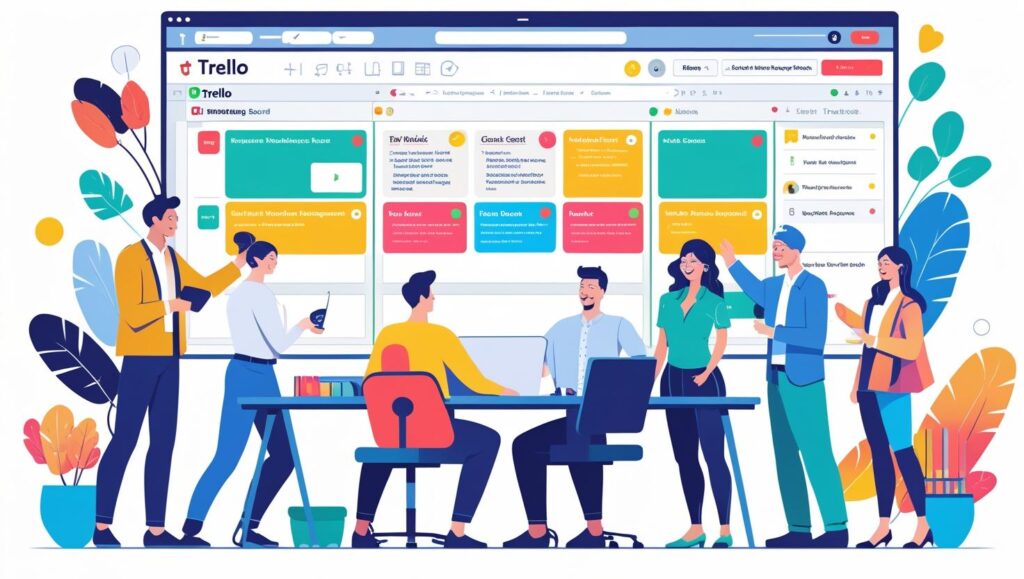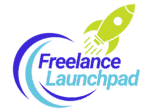The freelancing world, with its promise of autonomy and flexible work, beckons millions. In 2023, a staggering 64.6 million Americans freelanced, contributing $1.37 trillion to the U.S. economy, a clear indicator of the gig economy’s burgeoning power. (Source: Upwork and Freelancers Union “Freelance Forward 2023” report). Yet, for the aspiring freelancer standing at the precipice, a daunting question often emerges: “How do I land clients when I have no prior freelance experience?”
The answer, surprisingly, often lies not in what you have done, but in how compelling you articulate what you can do. Your freelance bio, often relegated to an afterthought, is in fact your most potent weapon in securing those crucial early inquiries. It’s your digital handshake, your elevator pitch, and your opportunity to transform perceived weaknesses into undeniable strengths.

Forget the conventional wisdom that dictates a long list of past clients. This article will equip you with time-tested, honest strategies to craft an irresistible “About Me” section that highlights transferable skills, showcases your passion, and hooks those elusive start-up clients – all without misleading them. We’ll delve into the psychological underpinnings of client acquisition and reveal how to build credibility from the ground up.
The Unseen Power of Your Bio: More Than Just Words
Before we dissect the anatomy of a powerful bio, let’s understand its profound importance. Your bio isn’t merely a factual recount of your professional journey; it’s a strategic marketing tool designed to:
- Establish Trust and Credibility: In a digital landscape teeming with anonymous profiles, a well-crafted bio humanizes you, fostering a connection built on trust. Clients are more likely to engage with someone they perceive as authentic and reliable.
- Differentiate You from the Crowd: The freelance marketplace is competitive. Your bio is your unique voice, your opportunity to stand out amidst a sea of generic profiles.
- Showcase Your Value Proposition: Beyond listing services, your bio should articulate the benefits you bring to a client. What problems do you solve? What results can they expect?
Inspire Action: Ultimately, your bio should compel a potential client to take the next step – whether it’s sending an inquiry, visiting your portfolio, or scheduling a consultation.

“I’m convinced that about half of what separates successful entrepreneurs from the non-successful ones is pure perseverance.”
– Steve Jobs
A study by the Harvard Business Review on effective communication highlights the importance of storytelling in building rapport and influencing decisions. Your bio, in essence, is your professional origin story – make it compelling. (Source: Harvard Business Review, “The Science of Storytelling: Why Stories Make Us So Good at Persuasion,” July-August 2017).
Deconstructing the “No Experience” Myth: Unearthing Your Transferable Skills
The biggest hurdle for new freelancers is often the perceived lack of “freelance experience.” This is a misnomer. Every individual possesses a wealth of experience, albeit in different forms. The key is to identify and articulate your transferable skills. These are the competencies gained in one context that are applicable to another.
Consider these scenarios:
Homemaker/Caregiver: You’ve mastered budgeting, scheduling, negotiation, crisis management, and resourcefulness. Highly relevant for a freelance bookkeeper, administrative assistant, or even a coach.
Customer Service Representative: You’ve honed communication, problem-solving, empathy, and organizational skills. These are invaluable for a freelance virtual assistant or content writer.
Retail Associate: You’ve developed sales acumen, persuasive communication, time management, and the ability to understand customer needs. Excellent for a freelance sales copywriter or social media manager.
Student Project Leader: You’ve demonstrated leadership, project management, research, and presentation skills. Perfect for a freelance project manager or consultant.

Actionable Insight: Take a blank sheet of paper or open a new document. List every job, volunteer role, academic project, or personal endeavour you’ve ever undertaken.
Next to each, brainstorm at least three skills you developed or utilized. You’ll be astonished at the breadth of your capabilities. This exercise is the bedrock of your “no experience” bio.
Crafting Your Bio: A Section-by-Section Masterclass
Now, let’s break down the elements of a powerful freelance bio, ensuring each component serves a strategic purpose.
1. The Irresistible Hook: Your Headline/Opening Statement (25-50 words)
This is your immediate attention grabber. It should be concise, impactful, and clearly state what you do and for whom. Avoid generic statements. Instead of: “I am a content writer.” Try:
- “Empowering Small Businesses with Engaging & SEO-Optimized Blog Content to Drive Organic Traffic.” (For a content writer)
- “Transforming Ideas into Stunning Visuals: Graphic Designer Specializing in Brand Identity for Start-ups.” (For a graphic designer)
- “Streamlining Operations & Boosting Efficiency: Virtual Assistant for Busy Entrepreneurs.” (For a virtual assistant)
Pro Tip: Incorporate a long-tail keyword relevant to your niche. This aids in SEO and helps potential clients find you when they’re searching for specific services. For instance, “SEO-optimized blog content” is more specific than just “content writing.”
2. The “Who You Help” Section: Defining Your Ideal Client (50-75 words)
One of the biggest mistakes new freelancers make is trying to appeal to everyone. This dilutes your message. By clearly defining your ideal client, you attract those who genuinely need your services and resonate with your approach.
- Example: “I partner with ambitious solopreneurs and burgeoning start-ups who are passionate about their mission but struggle to articulate their value through compelling written content.”
This section demonstrates that you understand their pain points and are specifically equipped to address them. Clients appreciate specialists, not generalists. Research by Statista shows that customers are increasingly seeking personalized experiences, reinforcing the need to define your niche. (Source: Statista, “Personalization vs. Privacy: Why Consumers Love and Hate Personalized Content,” 2023).
If we tried to think of a good idea, we wouldn’t have been able to think of a good idea at all. You just have to have a solution for a problem in your own life
Brian Chesky, co-founder of Airbnb



3. Showcasing Your Transferable Skills & Unique Approach (150-250 words)
This is where your transferable skills exercise comes into play. Instead of stating “I don’t have freelance experience,” articulate how your past experiences have equipped you for success in your chosen freelance field. Use strong action verbs.
- If you’re a writer: “My background in [previous field, e.g., academic research, corporate communications] honed my ability to [skill 1, e.g., synthesize complex information into digestible prose], [skill 2, e.g., conduct thorough research], and [skill 3, e.g., craft persuasive arguments]. This unique blend allows me to create content that is not only well-written but also deeply impactful and strategically aligned with your business objectives.”
- If you’re a designer: “Years spent [previous role, e.g., coordinating events, managing a retail store] developed my keen eye for [skill 1, e.g., detail], my understanding of [skill 2, e.g., visual merchandising], and my knack for [skill 3, e.g., creating cohesive themes]. I translate these insights into designs that are not just aesthetically pleasing but also strategically resonate with your target audience.”
Crucial Point: Avoid jargon. Write in a clear, accessible language that your ideal client will understand. Focus on the outcome of your skills, not just the skills themselves.
4. Your Passion & “Why”: The Human Element (75-100 words)
Clients don’t just hire skills; they hire people. Your passion for your craft and your genuine desire to help others can be a powerful differentiator, especially when starting out. This is where you connect on an emotional level.
- Example: “Beyond the technicalities, I am genuinely passionate about [your niche, e.g., helping small businesses thrive online]. There’s immense satisfaction in witnessing a client’s growth when their story is told effectively. My commitment extends beyond delivering a service; it’s about fostering long-term partnerships and celebrating your successes as my own.”
This section builds rapport and demonstrates your enthusiasm, which can be highly infectious.
5. What You Offer (Services): Clear and Concise (50-75 words)
While your bio is about you, it must also clearly state what services you provide. Use bullet points or a short, easy-to-scan paragraph.
- Example:
- Blog Post Creation & Content Strategy
- Website Copy & Landing Page Optimization
- Email Marketing Campaigns
- SEO Keyword Research & Implementation
6. The Call to Action (CTA): Guiding the Client (25-50 words)
Don’t leave potential clients wondering what to do next. Clearly state your desired action.
- “Ready to elevate your [client’s pain point/your solution]? Let’s connect! Feel free to [email me/schedule a discovery call] to discuss how I can bring your vision to life.”
- “Curious about how [your service] can transform your [client’s goal]? Explore my portfolio [link] or reach out for a no-obligation consultation.”
Data-Backed CTA: Research by HubSpot suggests that personalized calls to action convert 202% better than basic CTAs. (Source: HubSpot, “Calls to Action: 15 Best Practices to Optimize for Conversions,” 2023). Tailor your CTA to be specific to your offer.
Creative Avenues to Get Early Inquiries & Hook Start-Up Clients
“No experience” doesn’t mean no opportunities. Here are honest, time-proven strategies to build a portfolio and attract those crucial first clients without misleading them:
- The Pro Bono Project with a Testimonial Focus: Offer your services for free or at a heavily discounted rate to a non-profit, a friend’s fledgling business, or a community organization. The catch? In exchange, you get a glowing testimonial and permission to use the work in your portfolio. This isn’t “free work”; it’s a strategic investment in your future.
- Fact: A survey by BrightLocal found that 73% of consumers say positive reviews make them trust a local business more. (Source: BrightLocal Local Consumer Review Survey, 2023). A testimonial from a pro bono client is a powerful form of social proof.
- Fact: A survey by BrightLocal found that 73% of consumers say positive reviews make them trust a local business more. (Source: BrightLocal Local Consumer Review Survey, 2023). A testimonial from a pro bono client is a powerful form of social proof.
- Spec Work with a Purpose (The “Pitch First” Method): Instead of waiting for opportunities, identify a start-up or small business that could genuinely benefit from your skills. Create a small, sample piece of work (e.g., a proposed blog outline for their website, a re-design of their current social media banner, a brief marketing plan). Then, craft a personalized email outlining their potential pain points and how your spec work offers a solution. This demonstrates initiative and practical skill.
- Caution: Ensure this is a targeted, value-driven pitch, not a generic “here’s my resume.”
- Caution: Ensure this is a targeted, value-driven pitch, not a generic “here’s my resume.”
- Harnessing the Power of Personal Projects: Love writing about sustainable living? Start a blog. Passionate about retro gaming? Design a fan art series. Your personal projects demonstrate skill, dedication, and passion. Treat them with the same professionalism as client work. They become a vital part of your portfolio and a testament to your abilities.
- Example: Many successful designers and developers built impressive portfolios through personal projects before landing their first paid gigs. Consider the rise of “passion projects” showcased on platforms like Behance and Dribbble.
- Example: Many successful designers and developers built impressive portfolios through personal projects before landing their first paid gigs. Consider the rise of “passion projects” showcased on platforms like Behance and Dribbble.
- Leveraging LinkedIn and Professional Networking: Don’t just set up a profile; actively engage. Share insightful articles related to your niche, comment thoughtfully on industry posts, and connect with potential clients and fellow freelancers. Participate in relevant LinkedIn groups. Use the “Open to Work” feature, but ensure your headline and “About” section are optimized as discussed above.
- Fact: LinkedIn remains a dominant platform for professional networking. A study by Kinsta found that 95% of recruiters use LinkedIn to find candidates. (Source: Kinsta, “LinkedIn Statistics You Need to Know,” 2024).
- Fact: LinkedIn remains a dominant platform for professional networking. A study by Kinsta found that 95% of recruiters use LinkedIn to find candidates. (Source: Kinsta, “LinkedIn Statistics You Need to Know,” 2024).
- Online Freelance Platforms (with a Strategic Approach): While competitive, platforms like Upwork, Fiverr, and PeoplePerHour can be a starting point. Focus on lower-paying “starter” projects to build reviews and ratings. Over-deliver on these projects to secure five-star feedback. Your bio on these platforms is even more critical for standing out.
- Strategy: On these platforms, prioritize projects where you can truly excel and deliver exceptional value, even if the pay is initially low. Positive reviews are gold.
- Strategy: On these platforms, prioritize projects where you can truly excel and deliver exceptional value, even if the pay is initially low. Positive reviews are gold.
- Guest Blogging and Content Contribution: Offer to write a guest post for a relevant industry blog. This positions you as an expert, provides a writing sample, and can drive traffic back to your own website or profile.
- Benefit: Guest blogging helps build backlinks (good for SEO), increases your visibility, and establishes you as a thought leader.

You are doing great – nearly finished the article, keep going, let us know your thoughts once you are done, we love to hear your feedback to help us improve our offering to you through this site!
Building Credibility from the Ground Up: Honest Strategies That Work
Beyond your bio and initial outreach, sustained credibility comes from consistent, ethical practices:
- Transparency is King: If a client asks about your experience, be honest. “While I’m relatively new to freelancing, my [relevant experience/personal project] has equipped me with [specific skills] that I’m confident will deliver excellent results for your project. I’m eager to prove my value.” This honesty builds trust.
- Over-Deliver Every Time: Exceed expectations on every project, no matter how small. Deliver early, communicate proactively, and offer an extra touch (e.g., a bonus tip, an extra revision). This fosters positive word-of-mouth and repeat business.
- Professionalism in All Interactions: Respond promptly to inquiries, communicate clearly and courteously, and always meet deadlines. Even if a project doesn’t go forward, leave a positive impression.
- Continuous Learning and Skill Development: The freelance landscape evolves rapidly. Invest in yourself. Take online courses, read industry books, and stay updated on trends. Showcase your commitment to growth in your bio or on your profile. Mentioning relevant certifications or courses reinforces your dedication.
- Building a Strong Portfolio (Even with No Paid Work): As discussed, personal projects, pro bono work, and even hypothetical client projects can populate your portfolio. Quality over quantity. Each piece should showcase your best work and demonstrate your specific skills.
- Seek Feedback Actively: After completing a project (even pro bono), ask for specific feedback and, if positive, a testimonial. This not only helps you improve but also provides valuable social proof for future clients.
Final Thoughts: Your Journey Begins Now
The path to a thriving freelance career isn’t paved with instant success but with persistent effort, strategic self-promotion, and an unwavering commitment to delivering value. Your freelance bio, far from being a mere formality, is your declaration of intent, your statement of capability, and your invitation to collaborate.
Embrace the “no experience” phase not as a deficit, but as an opportunity to be innovative, hungry, and client-focused. By diligently applying the principles outlined in this guide, you won’t just craft a compelling bio; you’ll build the foundation for a successful and fulfilling freelance journey. The first inquiry is within reach – are you ready to seize it?
Your First Steps to Freelance Freedom
Freelance Bio Generator Prompt Maker
Use this carefully as a tool to just give you some ideas and direction. Do not use this as a replacement for good planning, thinking and consideration with your own brain! It is simply a tool to help you get started!
Martin Salter – FreelanceLaunchpad.com
Fill in the blanks below and then click to get your prompt. Visit your favourite AI tool like Gemini, ChatGPT, Perplexity, Grok or Claude (or your preferred go to AI tool) and paste in the prompt for a short and to the point Bio.
Once it has given that to you, feel free to ask it to expand further for a longer Bio, suitable to place on LinkedIn, Facebook, X, and even your own Blog. Make sure to prompt for questions from you first for more detail about you before asking for the expanded version. It will help you get a better reponse.
A good tip is to set the tone by saying something like “You are a veteran HR manager and recruiter, interview me to find out more about me to give you a better insight into my skills, experience and tone”
Give it a go, then be sure to come back to our comments section and let us know how you got on, or pop over to our Facebook page and share how it went!
